1. Meiji Period
2. Taisho Period
3. Before WW2
4. After WW2
5. Overview
6. Successive Directors
It has long been well known to biologists that the Misaki Peninsula is exceptionally rich in marine fauna. This was first noticed by Ludwig DODERLEIN, Professor of Natural History at the Medical Department, University of Tokyo, when he collected marine forms around Misaki in 1881. This information seems soon to have been communicated to Kakichi MITSUKURI, Professor of Zoology of the Science Department, University of Tokyo. After several preliminary inspections, Professor MITSUKURI decided, in 1884, to establish a marine biological station at Misaki. The University of Tokyo obtained a site in the town of Misaki in 1885, and the laboratory was completed on December 13, 1886. The first marine biological laboratory in Japan was named the “Misaki Marine Biological Station” (MMBS) on April 1, 1887. Though the Station was very small in scale (it consisted of only one two-storied wooden building on a lot of only 230 m2), it was greatly exciting for the young marine biologists of the time, who were really pioneers. In the establishment of the Station, Professor MITSUKURI had asked advice from Professor Anthon DOHRN of Naples; his ideas seem to have been reflected in the design of the building.
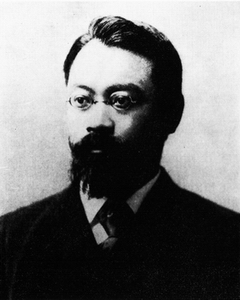
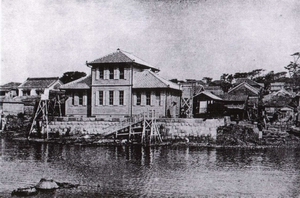
The confident expectations of Professor MITSUKURI were fortunately fulfilled, and many research projects were started on various marine forms, taking advantage of the unique fauna of the Misaki area. Many kinds of new or rare species were reported from the Station in rapid succession, and the name of Misaki became famous in a short time. For the patient exploration of the fauna in the surrounding seas, a great contribution was made by Mr. Kumakichi AOKI, a veteran collector, who was affectionately called “Kuma-San.” Having been brought up as a skillful fisherman, he had exact and useful information about the Bay of Sagami; he was also endowed with a remarkable talent for collecting deep-sea animals through “Haenawa,” a traditional fishing method using a long line. Kind aid was also given by Mr. Alan OWSTON, an English merchant and amateur naturalist. He often sailed about the Bay of Sagami in his beloved yacht, the “Golden Hind,” and collected marine animals by dredging. The specimens he thus obtained were frequently presented to the Station. Sometimes he sailed together with the staff of the Station; this was a great help to them, because they had no fully-equipped boat at that time.
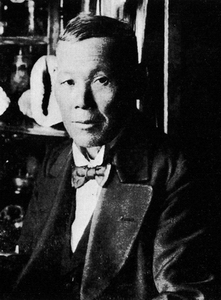
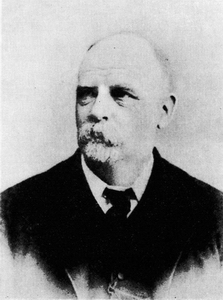
In 1897, the Station moved from its original location right in the town of Misaki to its present site, Koajiro (about 2 km north of the center of the town). This was because the surrounding seaside had been devastated by the expansion of the town, on the one hand, and by the fact that the Station building had come to be felt to be too small to accommodate the growing number of visiting researchers, on the other. The new location was the ancient site of the Arai castle of the famous Miura clan, warriors in this district. After the fall of the castle in 1516 in a battle against the Ho^jo^ clan, other powerful warriors, the ruins had been left for centuries. The new Station was faced Aburatsubo Bay; it was equipped with two research buildings at the seaside and one dormitory on the hilltop, set in a large campus (9,200m2). The organization of the Station was also consolidated at this time, with Professor MITSUKURI being formally nominated as the first Director in 1898.
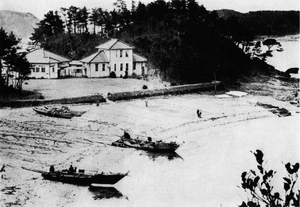
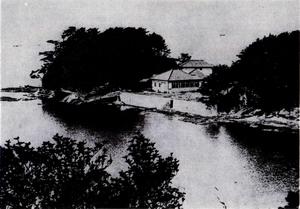
Visiting researchers from abroad gradually increased in number after the setting-up of the new station in Koajiro, and some of them stayed there for a long time. Dr. Bashford DEAN (left photograph), a famous American ichthyologist, came in 1900-01 and again in 1905. With his wife, he stayed in a villa residence he himself provided. This house was later donated to the Station; as the Dean House, it remained in use until recently. Similarly, Dr. David Starr JORDAN from the United States visited the Station in 1900. He collected many kinds of fish, amounting to 220 species, of which 25 were described as new species. The names of several other famous biologists of the time can also be seen in the records: Dr. Peter SCHMIDT from Russia in 1901, Dr. Franz DOFLEIN from Germany in 1904, Dr. J.O. SNYDER and Dr. C.H. GILBERT (right photograph) from the United States in 1906, Dr. W.E. KELLICOTT in 1913, Dr. Theodor MORTENSEN (an echinoderm specialist) in 1914, and Drs. E.N. & E.B. HARVEY In 1916.
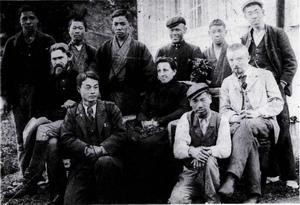
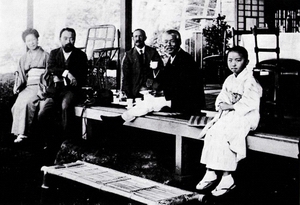
In 1910, the Station was expanded under the supervision of Professor Isao IJIMA(named as the second Director in 1904); this was done in connection with the establishment of the Institute of Fisheries in the College of Agriculture (now the Faculty of Agriculture, University of Tokyo). The campus was enlarged by purchasing an adjacent area of about 23,000 m2; it thus reached nearly its present size. The old buildings were remodeled and extended, and two new buildings, including an aquarium, were added. The dormitory was also enlarged. The aquarium was open to the public without charge. The “Dosun-Maru,” a 12-ton sailing ship especially designed for collecting marine animals, was launched in 1915. It may also be worthy of mention that the cultivation of pearls was extensively studied at the Station from 1908 to 1912. This study contributed greatly to the production of true cultured pearls.
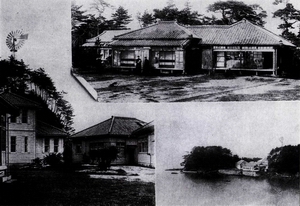
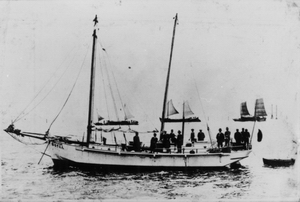
Professor Isao IJIMA devoted himself to the education of those pioneering young students in the early days of zoology in Japan. He wrote “A Manual of Zoology” (in Japanese), one of his masterpieces, in 1918; in it we can clearly recognize the great contribution made by the MMBS to the advancement of zoology in this country. After the sudden death of Professor IJIMA in 1921, his duties as Director fell to Professor Naohide YATSU (3rd Director). Under his leadership, it was planned to introduce many experimental devices to the laboratory in order to modernize the Station; he began this work by planning the remodeling of the buildings in 1923.
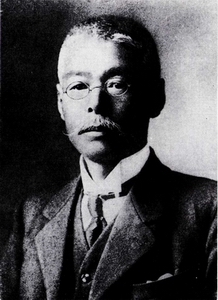
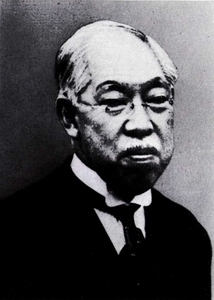
Unfortunately, however, the “Great Kanto Earthquake” came at just that time – on September 1, 1923; the buildings of the Station were seriously damaged. Many valuable specimens were lost, and several buildings were half-destroyed. Even worse, the fauna in the surroundings were considerably damaged by the sudden elevation of the coast (about 1 m).
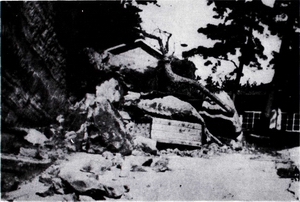
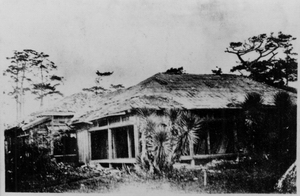
Before the earthquake, the Station had received many brilliant researchers and guests from abroad. The names of the prominent David Starr JORDAN, Hans MOLISCH, D. H. TENNENT, and Hans DRIESCH appear in the old autograph book kept in the Laboratory. However, the Station had to endure desolate days after the sad disaster of the earthquake. The staff made every effort to reconstruct the laboratory, though, and its function had been restored, though barely, with newly supplemented equipment, by 1926. In that year, the Station received many guests who visited the laboratory on an excursion from the 3rd Pan-Pacific Science Congress held in Tokyo. An old picture postcard shows the atmosphere of the laboratory after the restoration. Postcards of this kind were issued as a set by the “Rinkai Club”, an informal union of students and visitors; first organized in 1910, it still continues. As mentioned on the card (in Japanese), it was distributed under the censorship, and with the permission, of the military authorities, since the Station lay in the midst of a strategic naval zone.
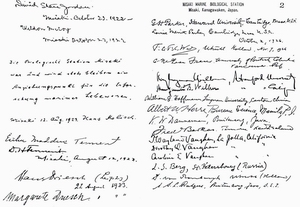
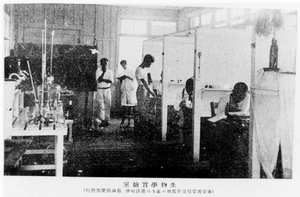
The practical managing of the Station in these days was taken over in 1927 by Dr. Masamitsu OSHIMA, followed by Dr. Megumi ERI in 1930. The above photographs show them together with their students and visitors. In the collector section, Mr. Jujiro DEGUCHI joined in 1927 as a new member; he received very strict training under the direction of the senior collector, “Kuma-San”. He later became a distinguished collector in his own right; affectionately called “Ju-San” by visiting researchers, he was really a most valuable asset of the Station. He died in 1982.
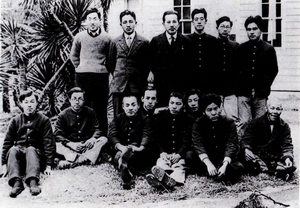
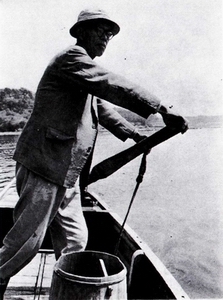
The vision of the modernization of the Station, which had been carried for many years in the mind of Professor YATSU, was realized at last by the completion of the aquarium building in 1932 and then by that of the main research building in 1936. Both buildings were built of reinforced concrete. The aquarium building (370 m2) contained an aquarium space on the lower floor and a specimen room above. It was opened to the public and attracted many visitors. The elegant main research building had a floor space of 1,016 m2 (12 rooms on the lower floor, 13 rooms on the upper floor, and 3 rooms in the basement). It was provided with many devices for experiments in modern biology. This building is still in use and has never needed any great modification, as is shown by the photograph on the front cover.
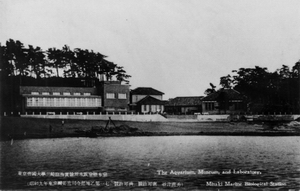
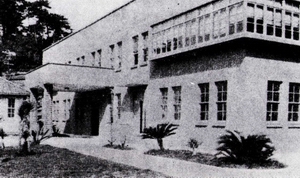
Professor YATSU retired in 1938, soon after the completion of the new buildings. He was succeeded as Director by Professor Shigeho TANAKA (4th Director) and then by Professor Yo K. OKADA (5th Director) in 1939. At that time, however, war clouds had already begun to hang over the country. After Japan began to war against the United States and other countries in 1941, it became hard to continue research work at the Station, for additional experimental materials, including glassware, chemicals, and photographic film, could scarcely be obtained once stocks were exhausted. What was even worse, all the buildings were requisitioned by the Japanese Navy in February of 1945 for use as a base of the so-called “Kamikaze” submarine boats. A poor cottage was given by the Navy as substitute quarters, but it was fit only for the scrap heap. In this forced evacuation of the Station, Assistant Professor Kenzo KIKUCHI and other staff members met with all kinds of troubles. It was unavoidable to break off all research work in such hard circumstances. “Ju-San” remained alone on the campus, making occasional tours of inspection around the Station.
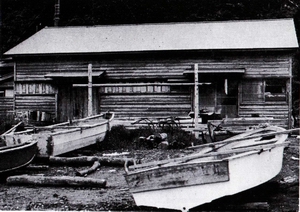
After the end of the War in 1945, the Station was occupied by the American forces as a Japanese military installation. On the day they arrived, Professor Katsuma DAN (a Lecturer at that time) rushed to the Station from his house in Nagai (near Misaki) on receiving an urgent message from “Ju-San”; on the porch of the Station, Professor DAN left his famous message, asking that the Station be treated carefully as a center of academic research and signed “The last one to go.” This message prevented the complete destruction of the Station by the military forces; indeed, it made possible a relatively early restitution of the buildings to the University. However, the Station was terribly devastated by the combination of war and occupation. The next year, 1946, the Station was again in the hands of the University. Long, hard labor was needed for its restoration. Sad to say, many of the staff and students never came back from the battlefield. Professor Kikuchi died in 1949, just after his promotion to Professor, due to exhaustion from his efforts to reconstruct the Station. The task was taken up by Assistant Professor Itiro TOMIYAMA (Professor after 1960), who became the 6th Director in 1952.
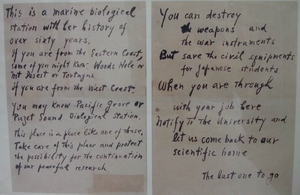
Hard days continued for several years after the war. Supplies of experimental materials and equipment were scanty. Even the boats for collecting animals had been lost. Besides, the food situation was at its worst; visitors had to bring their own rice and other daily food. The revival of the Station was entirely due to the constant endeavor of all its staff, arising from their affection for the laboratory. At last, the Station could restore its normal daily routine around 1955. It then developed further during the late 1950’s and the early 1960’s, becoming one of the leading centers of experimental marine biology in Japan. In 1967, Professor TOMIYAMA, who had rendered distinguished service in the restoration of the Station, retired; he was succeeded by Professor Haruo KINOSHITA (7th Director). The modernization of the laboratory proceeded still more under his leadership. In the autumn of 1970, the aquarium was closed, its long history coming to an end. This was because several large, private aquariums had been opened, one after another, in the Kanto district.
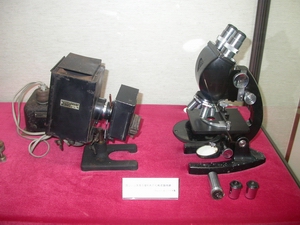
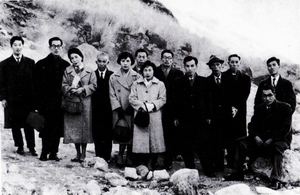
In the 1970’s, the Station entered into an age of further progress under Professor Hideshi KOBAYASHI (8th Director) and Professor Hiroshi TERAYAMA (9th Director). Many pieces of modern equipment were introduced into the laboratories, and a new collecting ship, the “Rinkai-Maru”, came into use. Moreover, the “Misaki Seminar” stared in 1978. This seminar meets once every two or three years, with regular visitors and invited guests discussing a selected subject. The extension course of marine biology started in 1991. This course in designed for the students from all university of Japan. Reflecting the industrial development in Japan, however, the natural environment and biological resources surrounding the Station have suffered serious damage as a result of the aberrant exploitation of land. The Station, under the leadership of successive directors, has concentrated its efforts on protecting nature against such destruction. The most critical threat was the plan to construct a breakwater which would have closed Aburatsubo Bay; this plan, proposed by the Fishery Office of Kanagawa Prefecture in 1980, was designed to use the natural inlet as a part of refuge, but without regard to the academic value of the area and the activities of the Station. Fortunately, the plan was modified after long and difficult negotiations; the worst case was thus narrowly avoided.
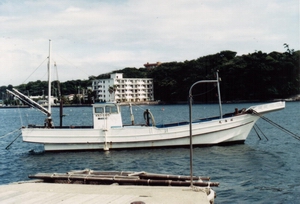
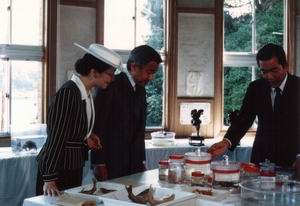
The waves of haphazard exploitation of natural environment have been threatening to disrupt the rich biological resources in the waters around the Misaki Marine Biological Station. It is one of our most urgent concerns to reverse the destruction and maintain the ecosystem, which is a precious legacy we should be able to boast to the world. Turning our eyes to the premises of the Station, super-annuation of buildings has been a serious problem for years. While some auxiliary buildings were rebuilt in the last two decades, the improvement of the main building remained as a big project for us to undertake. After preparatory negotiations were commenced during the terms of directors, Prof. Seiichiro KINOSHITA, Prof. Takeo MIZUNO and Prof. Keiichi TAKAHASHI, plans were developed and discussed under Prof. Masaaki MORISAWA. The investigation of the ruins of Arai castle, the debates for marine environmental protection, the conference with the fishermen’s union concerning the planned RI facilities, and many other efforts have finally led to the completion of the New Research Building equipped with specialized research facilities such as large breeding aquaria, experimental aquaria, genetic laboratory with RI facilities, molecular biology laboratory, cell culture room, shield room, etc. on September 29, 1993. The plan to decommission the old main building and the specimen hall was declined. These were remodeled and are used as educational facilities named Memorial Building and Aquarium, respectively. A research vessel “new” Rinkai-maru of 17 tons equipped with a winch with 2,000 m steel wire, etc. was launched to investigate not only marine organisms inhabiting shallow waters but also deep-sea dwellers and was replaced with the 23-years-old Rinkai-maru (9 t). Furthermore, improvement of the pier is being planned to moor her at it derectly. The International Symposium on the Molecular and Cell Biology of Fertilization and an international extension course of marine biology under three lectures from America and Europe were held in the summer of 1998 at Misaki.
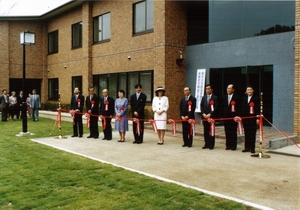
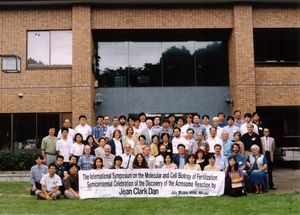
With the completion of the new facilities, the oldest and the most renowned institute for marine biology in Japan has now stepped into 21 century toward still higher goals.
5. Overview
| 1877(明10) | 東京大学理学部動物学教室創立 E.モース,来日 大森貝塚を発見する(6月) 東京大学理学部動物学教室初代教授となる(7月) 江の島に漁師小屋を借り,臨海実験所を設立(7月-8月) 日本政府に恒久的臨海実験所の建設を勧告 |
| 1879(明12) | モース, 東大教授の任満ち一時帰国 |
| 1881(明14) | デーデルライン, 三崎を訪れて生物の豊かさに気づく |
| 1882(明15) | 箕作佳吉動物学教授, 石川千代松を連れて三崎で実習 |
| 1883(明16) | 箕作, 石川ら, 三崎に滞在して採集 |
| 1884(明17) | 箕作,三崎に実験所建設の方針を立てる |
| 1885(明18) | 三崎町入船の海関(船番所)跡地を入手 |
| 1886(明19) | 12月13日 実験所落成 |
| 1887(明20) | 4月1日「帝国大学臨海実験所」として正式発足 |
| 1888(明21) | ウッズホール,プリマス両臨海実験所開設 |
| 1897(明30) | 実験所,小網代の現在地(油壺)に移転 |
| 1898(明31) | 8月 第1回臨海実習会 12月 箕作,初代所長となる |
| 1909(明42) | 水族棟完成し,無料公開 |
| 1910(明43) | 拡張工事完成 |
| 1915(大 4) | 「道寸丸」進水 |
| 1923(大12) | 7月 電灯ともる 8月 関東大震災 |
| 1927(昭 2) | 動力用電力来る |
| 1928(昭 3) | 水族飼養槽を増設し,有料で公開. |
| 1930(昭 5) | 電話開通 |
| 1932(昭 7) | 水族館完成 |
| 1936(昭11) | 実験所本館完成 |
| 1937(昭12) | 日中戦争勃発 |
| 1939(昭14) | 最後の臨海実習会(第24回) |
| 1941(昭16) | 太平洋戦争勃発 |
| 1945(昭20) | 2月 海軍に接収され,特殊潜航艇基地となる.実験所は小網代の小屋に移転. 8月15日 敗戦 9月 米軍進駐 |
| 1946(昭21) | 3月 米軍撤収 |
| 1947(昭22) | 水族館の観覧を再開 |
| 1951(昭26) | 『東京大学理学部附属臨海実験所年報』発行開始 |
| 1954(昭29) | “Contributions from the Misaki Marine Biological Station” 第1集刊行 |
| 1959(昭34) | 「オベリア」進水 |
| 1973(昭48) | 「臨海丸」進水 |
| 1976(昭51) | 新宿泊棟完成 |
| 1978(昭53) | 第1回三崎セミナー |
| 1987(昭62) | 三崎臨海実験所創立百周年記念式典ならびに王子国際セミナー |
| 1991(平 3) | 第1回公開臨海実習 |
| 1993(平 5) | 新実験研究棟竣工 |
| 1996(平 8) | “新”「臨海丸」進水 |
| 1998(平10) | 国際シンポジウムが三崎で開催される.国際公開臨海実習開講. |
| 2007(平19) | 三崎臨海実験所創立120周年記念式典 |
| 2009(平21) | 東京大学直属の機構として海洋基礎生物学研究推進センターが発足 筑波大学下田臨海センターと共同で海洋生物学推進機構(JAMBIO)を設立 |
6. Successive Directors
| 氏名 | 在任期間 | |
| 初代 | 箕作 佳吉(Kakichi MITSUKURI) | 1898-1904 |
| 2 | 飯島 魁(Isao IJIMA) | 1904-1921 |
| 3 | 谷津 直秀(Naohide YATSU) | 1922-1938 |
| 4 | 田中 茂穂(Shigeho TANAKA) | 1938-1939 |
| 5 | 岡田 要(Yo K. OKADA) | 1939-1952 |
| 6 | 冨山 一郎(Itiro TOMIYAMA) | 1952-1967 |
| 7 | 木下 治雄(Haruo KINOSHITA) | 1967-1972 |
| 8 | 小林 英司(Hideshi KOBAYASHI) | 1972-1975 |
| 9 | 寺山 宏(Hiroshi TERAYAMA) | 1975-1982 |
| 10 | 木下 清一郎(Seiichiro KINOSHITA) | 1982-1986 |
| 11 | 水野 丈夫(Takeo MIZUNO) | 1986-1988 |
| 12 | 高橋 景一(Keiichi TAKAHASHI) | 1988-1992 |
| 13 | 森澤 正昭(Masaaki MORISAWA) | 1992-2004 |
| 14 | 赤坂 甲治(Koji AKASAKA) | 2004-2017 |
| 15 | 岡 良隆(Yoshitaka OKA) | 2017- |
